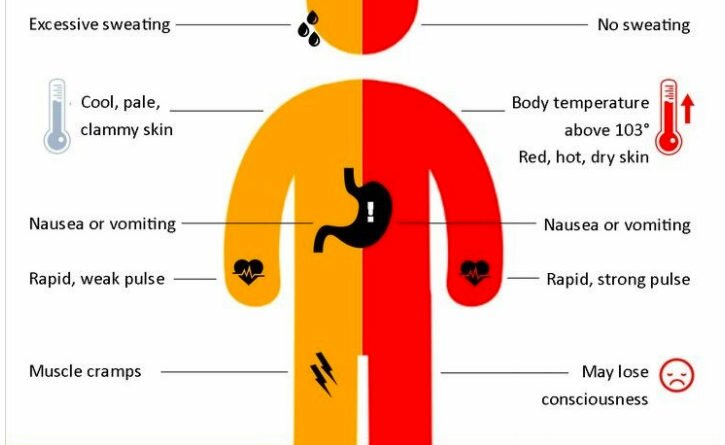Safety Tips for Extreme Heat
Heat is the deadliest weather-related killer in Arizona. More than 100 people die in the state each year, on average, due to the heat, and about 2,000 end up in the emergency room, according to the state health department. Most of the deaths and illnesses are preventable, officials say. [Related: Heat Safety for Dogs]
ON THIS PAGE
Risk Factors | Prevention | Signs & Symptoms | Emergencies
How Heat Kills
Heat can kill anyone, even those who are extremely fit but who put themselves at risk on a hot day. Here’s what happens
Sweating keeps the body cool. But in extreme heat, even if one drinks plenty of water, sweating may not do the trick. “In such cases, a person’s body temperature rises rapidly,” according to the U.S. Centers for Disease Control and Prevention. “Very high body temperatures may damage the brain or other vital organs.”
Risk Factors
Several factors affect the body’s ability to cool itself during extremely hot weather. When the humidity is high, sweat will not evaporate as quickly, preventing the body from releasing heat quickly. But “dry heat” can kill, too. While anyone can suffer heat stroke, the CDC cites these factors as presenting extra risk:
- Infants and children up to age 4
- People 65 years old and up
- People who are overweight
- People who are ill or on certain medications
Other risk factors include fever, dehydration, heart disease, mental illness, poor circulation, sunburn, and prescription drug and alcohol use.
Prevention
The National Weather Service offers the following advice during extreme heat events, and officials encourage people to check on the elderly and others who may need assistance:
- Never leave kids or pets unattended in cars.
- Drink more water than usual and avoid alcohol, sugar, and caffeine.
- When outdoors, wear light colored clothing and a wide-brimmed hat to keep your
head and body cooler. - If you must be outside, take frequent rest breaks in shaded or air conditioned environments — consider public places with air conditioning, such as libraries, community centers, government buildings, malls, and special refuge stations.
- Check car fluids, battery, tires and carry extra water in case of a break down or road closure.
- During extreme heat events, the City of Phoenix advise against hiking.
Heat Illness: Signs & Symptoms
Heat can bring down even the fittest person of any age.Untreated heat illness can lead to fatal heat stroke.
Early symptoms of heat exaustion include heavy sweating, weakness, headache, thirst, muscle cramps, pale or clammy skin, rapid but weak pulse and fainting.
Severe symptoms indicating heat stroke include a throbbing headache, hot and red dry skin, fast and strong pulse, sweating that has stopped, and unconsciousness.
Emergency Situations
If you see a child or pet trapped and in danger in a parked car on a hot day, Phoenix Police has this advice: “If you’re going to take action, call 9-1-1, take your action, then stick around for first responders to arrive.”
Likewise, if you or someone you know is suffering heat stroke, immediate medical care is vital. Call 9-1-1.
SOURCES: Arizona Department of Health Services; NWS; CDC; Maricopa County; City of Phoenix

